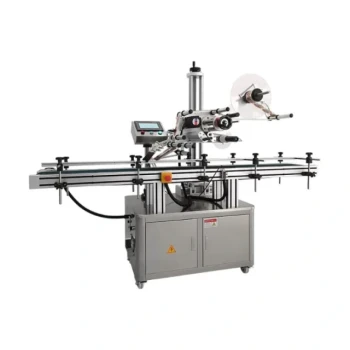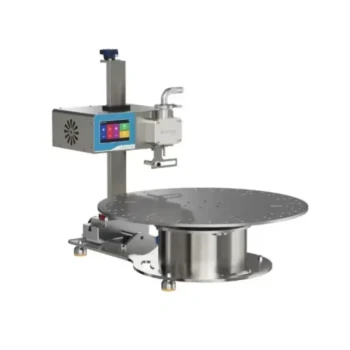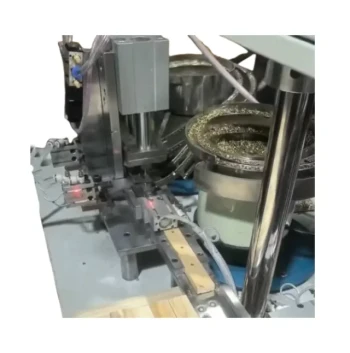Preparing wax sheets for milling is a meticulous process that begins long before the wax touches the rollers. The essential steps involve decontamination and soaking, followed by the critical stage of uniformly heating the wax, the milling room, and the mill rollers to specific temperature ranges to ensure the wax is pliable and produces a high-quality foundation.
The success of milling beeswax foundation hinges on one central principle: precise and consistent temperature control. Failure to properly heat the wax, the environment, and the equipment will lead to sticking, tearing, and damage to both the foundation and the mill itself.
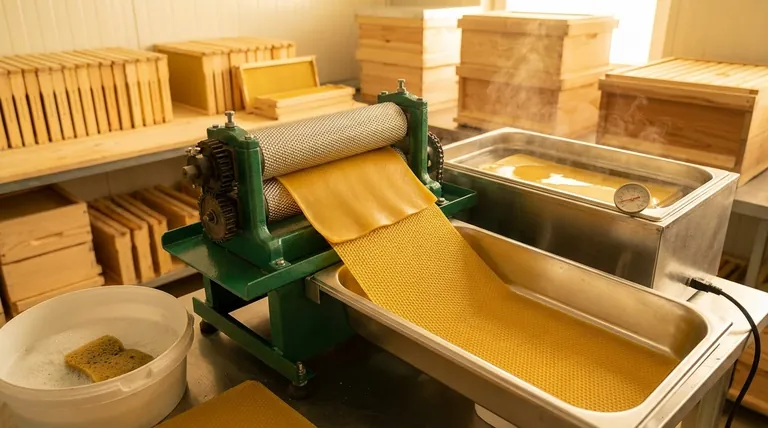
Foundational Steps: Purification and Soaking
The initial preparation of the wax is designed to purify it and ready it for the physical stress of milling.
Initial Decontamination
Before milling, wax sheets are often decontaminated. This can involve processes like using a Kelly wax press and photo-degrading the sheets under the UV rays of the sun.
The Briny Water Bath
Following decontamination, the wax sheets are soaked in a briny water bath. This step prepares the wax for the subsequent heating and milling stages.
The Critical Role of Temperature Control
Achieving the correct temperature for every component of the milling process is the most important factor for success. This ensures the wax flows correctly without becoming brittle or overly sticky.
Heating the Milling Environment
The room itself must be heated to at least 80°F, with 90°F being preferable. This warm environment prevents the pre-heated wax sheets from cooling down too quickly during handling.
Pre-heating the Wax Sheets
The wax sheets must be heated uniformly to a temperature between 90°F and 110°F. This can be accomplished in a thermostat-controlled water bath or a dedicated hot box, ensuring the entire sheet is pliable.
Preparing the Mill Rollers
The mill rollers must also be pre-heated to approximately 95°F - 100°F. This can be done by carefully using boiling water or a heating pad, preventing the cold metal from shocking and hardening the wax on contact.
Common Pitfalls and Equipment Care
Proper technique and maintenance are essential for producing a quality product and protecting your investment in the milling equipment.
Preventing Adhesion and Stretching
To prevent the warm wax from sticking to the rollers, use a water bath containing a 2% solution of mild, biodegradable soap. This solution seasons the rollers. It's also wise to place wax sheets in a plastic sleeve during handling to prevent stretching and distortion of the cell size.
Avoiding Physical Damage
During the milling process, you must handle the foundation carefully to avoid stretching it. On an adjustable mill, never screw the rollers down too tightly, as this can cause permanent damage to the delicate embossing heads.
Maintaining the Mill
Keep the milling area exceptionally clean to prevent debris from embedding in the wax sheets. The mill's gears should be greased often with a heavy gear grease to ensure they run tight and to reduce operational wear.
Making the Right Choice for Your Goal
Your specific objective will determine which steps require the most attention.
- If your primary focus is foundation quality: Pay meticulous attention to achieving uniform heat in the wax sheets, as this ensures a perfect emboss without weak spots.
- If your primary focus is equipment longevity: Prioritize proper lubrication of the gears and avoid overtightening the rollers to prevent costly damage.
- If your primary focus is process efficiency: Establish a clean workflow and stack finished sheets neatly between paper to retain warmth, which improves their ductility for easier handling later.
By mastering these preparatory steps, you transform a simple sheet of wax into a perfect foundation for a thriving honey bee colony.
Summary Table:
| Key Preparation Step | Critical Details |
|---|---|
| Milling Room Temperature | Heat to 80°F - 90°F (27°C - 32°C) |
| Wax Sheet Temperature | Pre-heat uniformly to 90°F - 110°F (32°C - 43°C) |
| Mill Roller Temperature | Pre-heat to 95°F - 100°F (35°C - 38°C) |
| Roller Lubrication | Use a 2% mild soap solution in the water bath |
| Equipment Care | Grease gears often; avoid overtightening rollers |
Produce Superior Beeswax Foundation with Reliable Equipment from HONESTBEE
Mastering the milling process requires not just skill but also dependable, high-quality equipment. At HONESTBEE, we supply commercial apiaries and beekeeping equipment distributors with the durable, precision tools needed for efficient, large-scale foundation production.
Let us help you optimize your output and protect your investment. Contact our wholesale experts today to discuss your apiary's specific needs.
Visual Guide
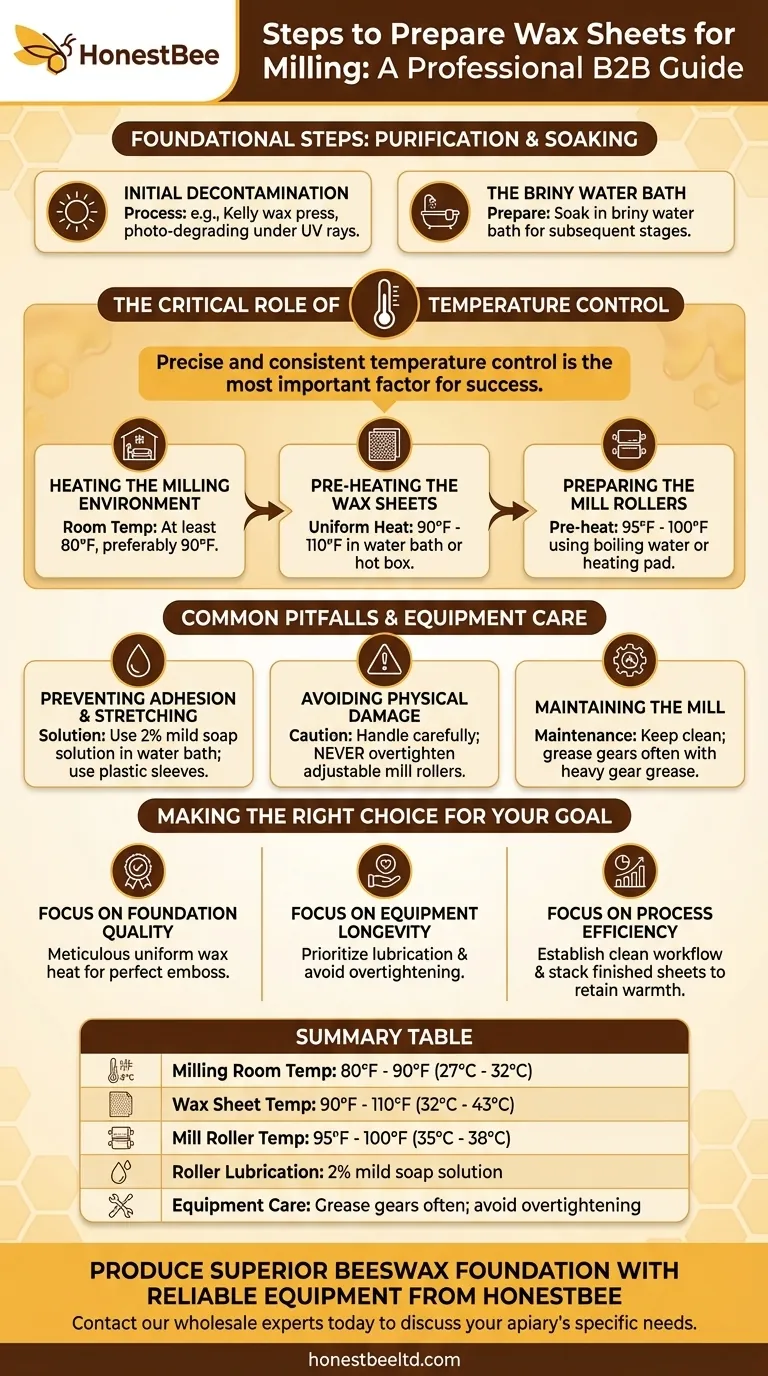
Related Products
- Electric Beeswax Foundation Machine With Operating Tray and Wax Foundation Roller
- Economy Manual Beeswax Embossing Mill Wax Foundation Machine Roller
- Electric Beeswax Flat Sheet Machine with Operating Tray for Wax Processing
- Manual Beeswax Flat Sheet Machine for Beeswax Processing
- Electric Flatting and Embossing Machine with Tray for Beekeeping
People Also Ask
- What are the benefits of using a machine to produce beeswax foundation sheets? Achieve Superior Hive Health & Efficiency
- What happens during the feeding stage of the beeswax flatting and embossing process? Ensure Perfect Foundation Sheets
- What is the function of a beeswax foundation machine? Boost Hive Efficiency and Honey Production
- What is the importance of soaping the rollers during milling? Prevent Wax Adhesion & Equipment Downtime
- What are the key features of the beeswax foundation machine's mold surface? Non-Stick, Durable & Precise













